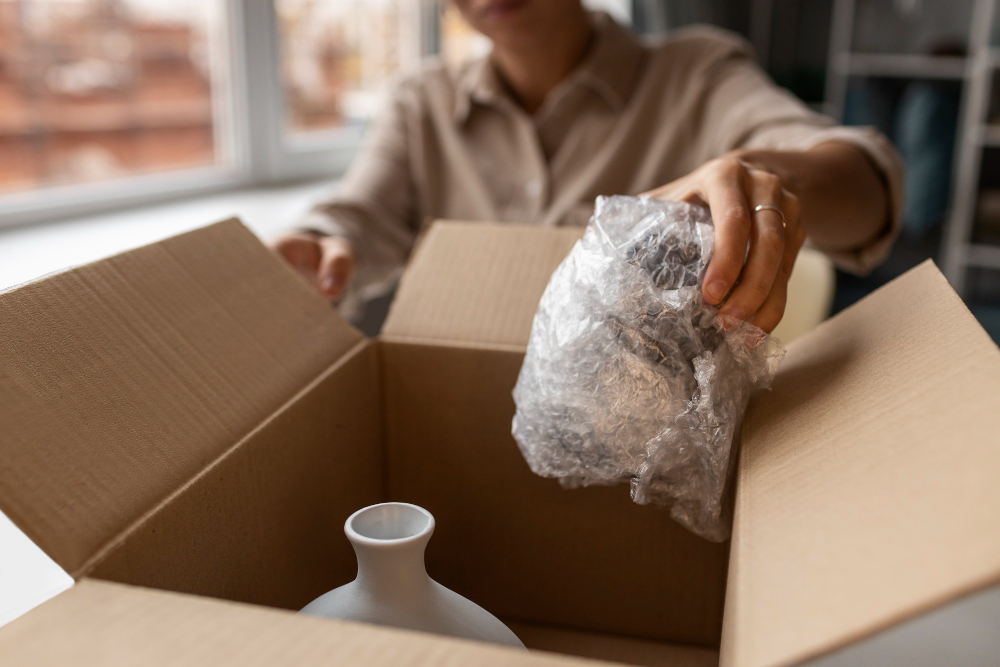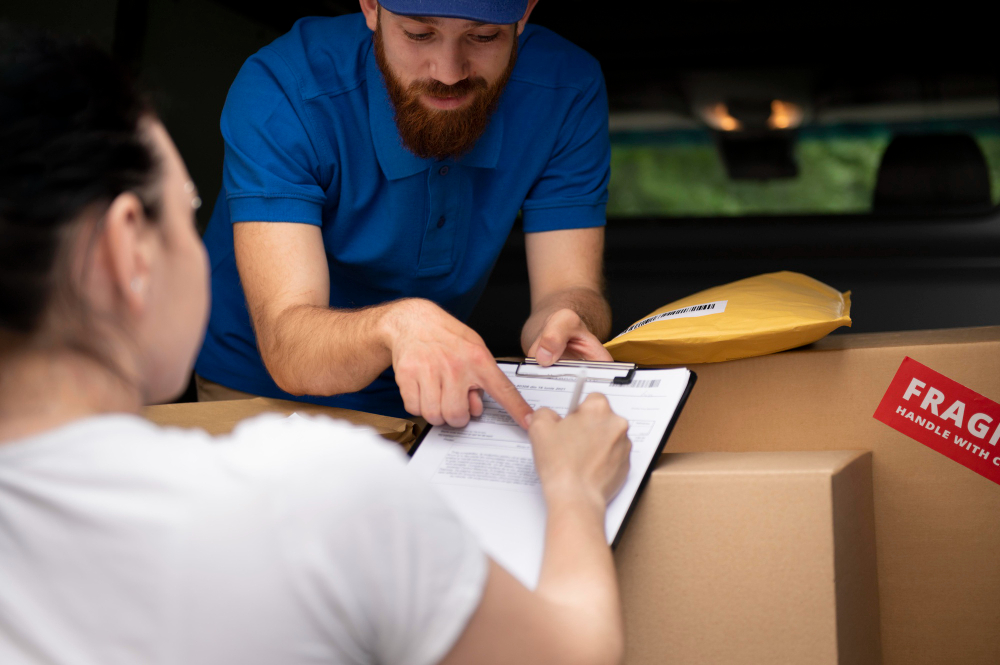Moving to a new place might sound exciting but actually requires foolproof planning that takes many days before the actual shifting. First things first, you must know everything about packing things. Although, the manpower team might take care of the bulking items but Packing Fragile Items still remains your task to deal.
Consider this article your packing partner especially when it comes down to packing fragile items. With these practically effective methods, you can ensure the safe transportation of things in their original shape.
Understanding the Importance of Proper Packing Fragile Items:
The whole process of choosing your dream house and moving seem like rainbow and sunshine but things get tough when packing comes into scene. It takes much more than just keeping your belongings secure to pack sensibly. Packing supplies that have a slight grip, such packing paper, make moving easier and reduce the chance that your belongings will not be dropped or handled incorrectly.
In the end, taking your time while packing is an investment in your mental health. Providing a safe refuge for your breakables will let you to focus on the excitement of moving into your new home, knowing that they will arrive intact.
However, the prominent hack of keeping your objects secured is marking the label “Handle with care”. This will indicate the movers to provide extra care to the respective box.
Gathering Packing Supplies:
Your delicate possessions are protected during the moving process when the right packing materials are used, reducing the chance of damage and guaranteeing their safe arrival at your new house. Picking up the right packing essential and technique not only keeps you carefree but also helps recognizing what is inside the box by labeling.
Essential Materials for Safe Transport
It takes additional care and attention in packing fragile items for relocation so they survive the trip to your new house. Here’s a rundown of everything you’ll need:
Boxes: You might need Double-walled, sturdy cardboard boxes that work best for the placement items. For heavier things like dishes, use smaller boxes; for lighter items like lampshades, use bigger boxes. If the original packaging is still available, try utilizing it for electronics.
Packing materials: There must be soft layer that wraps around the object. This can be made with material like bubble sheet, packing peanuts, foam sheet, linen or even a towel. This fills in the space so that it does not collide with the walls of the container.
Labeling: To guarantee that crates holding fragile objects are handled with care, fragile stickers and permanent markers can be used to designate them.
Organizing and Sorting:
Although moving might be a complex process, packing your fragile items doesn’t have to be difficult if you are a bit organized.
Here’s a guide to help you efficiently pack and categorize your sensitive items:
Sorting is Key:
- Declutter and Set Priorities: Make use of this time to declutter before packing. Get rid of anything damaged or unusable. You’ll save time, money on packing supplies, and room in your new house by doing this. Determine whether valuable or unique things require special handling or perhaps expert packaging.
- Sort by Room and Fragility: To facilitate subsequent unpacking, arrange your breakables by room. Sort objects according to fragility within each room category. Sturdier objects should be packed last and the most fragile items first.
Packing with Organization:
- Label Everything: Make sure to clearly mark boxes with the place they belong in as well as an explanation of what’s within. You’ll appreciate the time and hassle you’ll save when unpacking at your new house. It’s far more useful to look up “Kitchen – Fragile Plates” than just “Kitchen.”
- Pack Room by Room: Packing one room at a time keeps things under control and keeps objects from other rooms becoming mixed together. This facilitates the process of unpacking at your new house.
- Make Use of Various Box Sizes: Avoid packing too many boxes! For heavier things like dishes, use smaller, more robust boxes; for lighter, bulkier items like lampshades, use bigger boxes.

Wrap and Cushion:
Safeguarding your delicate treasures during a move requires proper wrapping and cushioning techniques.
Here’s how to create a protective haven for your fragile items:
The Art of Wrapping:
- Individual Attention: Show consideration for every delicate object. Individually wrap each one in packing paper or bubble wrap. Be very cautious around edges and corners as these are especially weak points. Consider wrapping really fragile things in numerous layers for further security.
- Particularized Methods: For some things, use these sophisticated wrapping techniques:
o Frame Technique: Using foam or bubble wrap, create a protective frame around the object. In essence, what you’re doing is creating a protective shell that absorbs shocks.
o Nesting Technique: Perfect for sets of delicate objects, such as glasses. After carefully wrapping each item separately, stack them together with cushioning between. This forms a protected cluster that saves space.
Cushioning for Impact Absorption:
To ensure the safety of your breakables during relocation, make sure the boxes are safe and well-padded. This requires individually wrapping of every item within the chosen material. If there are any gaps, they must be filled to keep the objects from moving. To ensure stability, place heavy things at the bottom and lighter ones at the top. Keep in mind not to pack too much into each box.
To maximize available space, use tricks like using dividers to hold plates upright. You may make sure your breakables survive the transfer safely by creating a protective nest for them with these methods.
Techniques for Protecting & Packing Fragile Items from Impact:
There are few strategies that might prevent the damage that can be done to the things you are moving along with. You need to make use of the following measurers to remove the concern of damaging.
Selecting the Right Boxes:
Your item should fit snugly inside the perfect box, leaving just enough room for padding materials. The most popular alternative are cardboard boxes; for larger or more delicate objects, double-walled corrugated cardboard offers improved strength. Seek for boxes with a thick, impact-absorbing, wavy inner layer.
Layering and Stacking:
Stacking and layering are essential methods for shielding delicate objects from knocks and collisions. Using cushioning materials, such as bubble wrap, in between objects to absorb stress and keep them from contacting is known as layering. Arranging objects in a deliberate manner on top of one another is known as stacking.
Always put the heavier, more durable objects at the bottom of the stack, with layers of padding between them and the lighter, more fragile items stacked on top. This minimizes strain on delicate things and equally distributes weight.
Labeling and Organizing:
Not only do neat labelling and organisation make unpacking easier, but they also help protect your breakables. Boxes labelled “Fragile” clearly advise handlers to take extra precautions. Don’t forget to include particular goods and rooms that are reserved for unpacking. As a result, movers may transport boxes to their ultimate locations more quickly, minimizing unnecessary handling and possible drops.
An additional degree of protection is added by keeping track of all the packaged things and their accompanying box labels. This way, nothing is forgotten or lost in the process.

Handling and Transporting:
For improved balance and stable support of the item’s base, always use two hands. When transporting boxes, keep your gait steady and avoid abrupt movements. Make sure they are fastened securely in the car so they won’t tip over or move while you’re driving. To ensure they stay there, use wedges or ties-down straps.
Remember, you want to make sure your fragile products arrive safely by aiming for a calm voyage with few bumps and jolts.
Unpacking and Placement:
In order to prevent unintentional drops, carefully open boxes on a level, sturdy surface. Items should be removed by their bases rather than being dragged across the cushioning material. Select a level spot for your products to be placed away from busy streets or places where they may be easily knocked over.
To offer extra impact protection in the event of unintentional bumps or spills, place them on a soft surface, such as a rug or carpet, if at all feasible. You can make sure that your breakables get from their protective container to their new home without any problems by following these instructions.
Final Inspection and Assessment:
After your delicate goods have been carefully wrapped, cushioned, and secured with all the precautionary steps, it’s time for the last examination. Give a little shake to every package. Is there anything that sounds off? If so, remove the issue by adjusting. Keep in mind that during transit, even the slightest adjustment might result in harm.
Now stand back and enjoy the job you’ve done! With your sturdy boxes and foolproof packing, you’ve built a stronghold for your priceless possessions. You may move with confidence knowing that your priceless belongings will reach your new house prepared to be shown off and enjoyed for many years to come if you use this careful packing fragile items method. Cheers to your successful unpacking!





